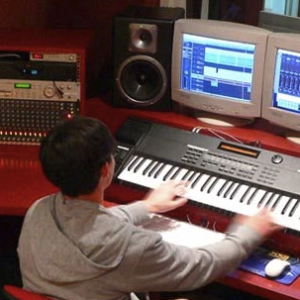Armando un grupo de beta testers para Partitur.es
 Como comentaba el otro día, el planteamiento del desarrollo iterativo requiere que al final de cada iteración se pruebe todo con usuarios reales. Son ellos los que indicarán que se ha hecho bien o mal, y ayudarán a decidir cuales son los siguientes pasos a dar.
Como comentaba el otro día, el planteamiento del desarrollo iterativo requiere que al final de cada iteración se pruebe todo con usuarios reales. Son ellos los que indicarán que se ha hecho bien o mal, y ayudarán a decidir cuales son los siguientes pasos a dar.
Por ello, en Partitur.es estamos montando nuestro grupo de beta-testers, formado por gente con la que hicimos el primer estudio de mercado, gente a la que le hemos hablado del proyecto y dijeron «me gusta, cuenta conmigo». Realmente muchas de estas personas ya han dado ideas de lo que la plataforma puede ser y sus ideas se han apuntado en la lista de funcionalidades, y además nos han ayudado ya a centrarnos, encontrar las funcionalidades centrales y entender y descubir algunas cosas que no conocíamos del mercado en que nos estamos metiendo.
El grupo aún está abierto, buscamos gente del mundo de la música: compositores, músicos, cantantes que sepan solfeo o que trabajen con partituras habitualmente. Si quieres ser beta-tester y participar en el desarrollo de Partitur.es, de nuestra plataforma para compartir partituras musicales, no dudes en mandarnos un correo a info@amorodio.es.
Tendremos reuniones mensuales presenciales con la gente que tenemos cerca, como cierre de cada iteración, para tener un trato directo (nos servirá para detectar la usabilidad y nos podrán dar respuestas mas directas). Además habrá otras vías de comunicación constante: encuestas, un panel en UserVoice.com y el email.
Ahora toca finalizar la primera iteración y empezar a preguntarles a los usuarios como lo ven. Ahora veremos si todos estamos pensando en lo mismo, veremos si cumple con sus expectativas.
Artículos interesantes al respecto:
Música, ciencia y tecnología
Interesante programa de tres14 (programa de divulgación científica de RTVE) que emitieron el pasado febrero en el que se habla de la música en todos sus aspectos. Desde los primeros instrumentos musicales humanos hasta los programas informáticos de reconocimiento de canciones.
Partitur.es: The path to music standard – GeneralMIDI and MusicXML
[aka TetuanValley Start-up School 2010 Spring Ed. post #2]
In the beginning, there was the dark… well, in the beginning there was the mess. In the 1970s, a growing electronical music devices industry provided successively more affordable products. This resulted on a series of different linking protocols. Each manufacturer (Roland, Yamaha, Oberheim) had its own standard and interfaces.
 In 1981, audio engineer and synthesizer designer of Sequential Circuits, Inc., Dave Smith, proposed a digital standard for musical instruments in a paper for the Audio Engineering Society. MIDI (Musical Instrument Digital Interface), was defined in 1982 as an industry-standard protocol, with the joined forces of MIDI Manufacturers Association (MMA) from USA and MIDI Committee of the Association of Musical Electronic Industry (AMEI) from Japan. The MIDI Specification 1.0 was then published in August 1984. The creation of MIDI broke the so-called «wall of sinthesizers». But the important year for standarized music notation is 1991, with the publication of General MIDI (GM).
In 1981, audio engineer and synthesizer designer of Sequential Circuits, Inc., Dave Smith, proposed a digital standard for musical instruments in a paper for the Audio Engineering Society. MIDI (Musical Instrument Digital Interface), was defined in 1982 as an industry-standard protocol, with the joined forces of MIDI Manufacturers Association (MMA) from USA and MIDI Committee of the Association of Musical Electronic Industry (AMEI) from Japan. The MIDI Specification 1.0 was then published in August 1984. The creation of MIDI broke the so-called «wall of sinthesizers». But the important year for standarized music notation is 1991, with the publication of General MIDI (GM).
MIDI has gone far beyond notated music (General MIDI, GM), allowing computers, synthesizers, MIDI controllers, etc. to control one another, to synchronize (MIDI timecode) and to exchange system data. It also allows to control stage effects on a concert, like lighting (MIDI Show Control). eXtensible Music File (XMF) describes a set of downlodable sounds in case you want to hear the same music as heard by the composer.
In 1994, another standard appeared: NIFF, Notation Interchange File Format. It was mainly used on Music OCR (Optical character recognition) software as the exportable result of scanning a chord on paper. NIFF was abandoned by their creators and sponsors in 2006.
In 2004 an open XML-based music notation file format that was the natural replace for GM was presented: MusicXML. It was developed by Recordare LLC, but with not-so-free license free of charge free license and just copyright trademark. MusicXML 2.0 was designed in 2007, including the definition for a compressed file (a nice improvement, because XML text documents are bigger than necessary). By 2010, more than 120 software programs use this format as well as their own one, becoming the de-facto standard one for shared music chords.
At Partitur.es we are going to deal mainly with GeneralMIDI and MusicXML, but we are open to cover other formats (Guido, NIFF or whatever our users say they need) on the import/export following the DataPortability ideals.
TetuanValley Start-up School 2010 Spring Ed. post #1
Con el objetivo de meter el turbo a Maki, nos hemos apuntado a la Tetuan Valley Start-Up School 2010, con el proyecto Partiture (que ha sido renombrado a Partitur.es porque el dominio nos pareció gracioso).
Cada miércoles durante 6 semanas nos dan unas lecciones sobre como emprender, mejorar la presentación de nuestra startup y nos dan con el látigo para que tengamos una demo presentable cuando acabe el curso. Como deberes fijos nos han mandado publicar un artículo en el blog semanalmente en inglés.
Aquí os dejo el artículo de esta semana que pretende ser una primera presentación de donde va nuestro proyecto (aunque no de nuestro proyecto):
Partitur.es: Share your chords
Internet is for share. From the beginning of the Internet, the idea was to join together efforts to make things. Now more people know it’s a place where whatever you are or you like, you can find somebody who like the same things as you, or who want to cooperate with you, no matter how far is from you.
Music and Internet. Lately we’ve heard a lot of bad news when this two words were together (piracy, crisis of music industry), but also we have heard new ways to improve the experience of discovering music (Last.fm, Rockola.fm or Spotify); and we know there is a huge movement around sharing lyrics and guitar-chords. And also we think, we can to make things easier to the music people with the help of internet.
Share music. Well, we aren’t talking about something is completely invented, we are talking about sharing the soul of the music: the chords. Partitur.es wants to become the place where people who love creating music come together, give them tools to share music with their colleagues and also with their fans. Partitur.es also can be used by people in chorals to have a quick repository of their repertory.
Our inspirational projects on the technical side are: Slideshare & Google Docs, where people can share their work in an easy way. We think we can do the same with chords, and help musicians an music-related people.
We are really excited with this 6-week race to make real our project, thanks to the people at TetuanValley.
Para terminar, recomiendo seguir el twitter de @tetuanvalley (y el hash tag #tetuanvalley) y echar un ojo a la lista @tetuanvalley/startupschool-spring10.
Primera etapa: Partitur.es

Un proyecto que surge de una necesidad, un primer vistazo al mercado me hace detectar que aquí se puede hacer un proyecto bonito, algo útil para los demás.
La idea central: compartir partituras musicales.
Y a partir de ahí, muchas ideas sobre como evolucionarlo, perfilarlo, como funciona, quien lo usará…